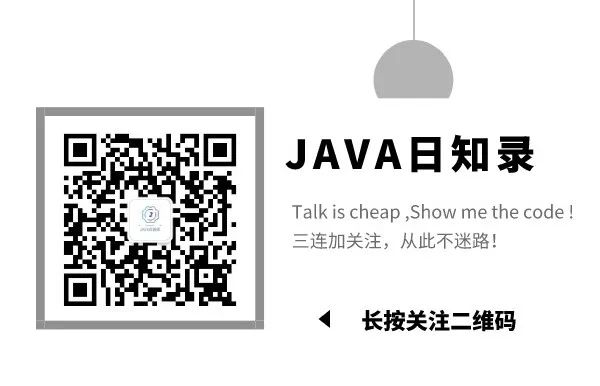
在项目实际开发过程中,我们有很多这样的业务场景:一个事务中处理完一个业务逻辑后需要跟着处理另外一个业务逻辑,伪码大致如下:
@Service public class ProductServiceImpl { ... public void saveProduct(Product product) { productMapper.saveOrder(product); notifyService.notify(product); } ... }
很简单并且很常见的一段业务逻辑:首先将产品先保存数据库,然后发送通知。
某一天你们可能需要把新增的产品存到Es中,这时候也需要代码可能变成这样:
@Service public class ProductServiceImpl { ... public void saveProduct(Product product) { productMapper.saveProduct(product); esService.saveProduct(product) notifyService.notify(product); } ... }
随着业务需求的变化,代码也需要跟着一遍遍的修改。而且还会存在另外一个问题,如果通知系统挂了,那就不能再新增产品了。
对于上面这种情况非常适合引入消息中间件(消息队列)来对业务进行解耦,但并非所有的业务系统都会引入消息中间件(引入会第三方架构组件会带来很大的运维成本)。
Spring提供了事件驱动机制可以帮助我们实现这一需求。
Spring事件驱动
spring事件驱动由3个部分组成
ApplicationEvent:表示事件本身,自定义事件需要继承该类,用来定义事件
ApplicationEventPublisher:事件发送器,主要用来发布事件
ApplicationListener:事件监听器接口,监听类实现ApplicationListener 里onApplicationEvent方法即可,也可以在方法上增加@EventListener以实现事件监听。
实现Spring事件驱动一般只需要三步:
自定义需要发布的事件类,需要继承ApplicationEvent类
使用ApplicationEventPublisher来发布自定义事件
使用@EventListener来监听事件
「这里需要特别注意一点,默认情况下事件是同步的。即事件被publish后会等待Listener的处理。如果发布事件处的业务存在事务,监听器处理也会在相同的事务中。如果需要异步处理事件,可以onApplicationEvent方法上加@Aync支持异步或在有@EventListener的注解方法上加上@Aync。」

源码实战
- 创建事件
public class ProductEvent extends ApplicationEvent { public ProductEvent(Product product) { super(product); } }
- 发布事件
@Service public class ProductServiceImpl implements IproductService { ... @Autowired private ApplicationEventPublisher publisher; @Override @Transactional(rollbackFor = Exception.class) public void saveProduct(Product product) { productMapper.saveProduct(product); //事件发布 publisher.publishEvent(product); } ... }
- 事件监听
`@Slf4j
@AllArgsConstructor
public class ProductListener {
private final NotifyService notifyServcie;
@Async
@Order
@EventListener(ProductEvent.class)
public void notify(ProductEvent event) {
Product product = (Product) event.getSource();
notifyServcie.notify(product, "product");
}
}
`
- 在SpringBoot启动类上增加
@EnableAsync注解
@Slf4j @EnableSwagger2 @SpringBootApplication @EnableAsync public class ApplicationBootstrap { ... }
- 使用了Async后会使用默认的线程池SimpleAsyncTaskExecutor,一般我们会在项目中自定义一个线程池。
`@Configuration
public class ExecutorConfig {
/** 核心线程数 /
private int corePoolSize = 10;
/* 最大线程数 /
private int maxPoolSize = 50;
/* 队列大小 /
private int queueCapacity = 10;
/* 线程最大空闲时间 */
private int keepAliveSeconds = 150;
@Bean("customExecutor")
public Executor myExecutor() {
ThreadPoolTaskExecutor executor = new ThreadPoolTaskExecutor();
executor.setCorePoolSize(corePoolSize);
executor.setMaxPoolSize(maxPoolSize);
executor.setQueueCapacity(queueCapacity);
executor.setThreadNamePrefix("customExecutor-");
executor.setKeepAliveSeconds(keepAliveSeconds);
// rejection-policy:当pool已经达到max size的时候,如何处理新任务
// CALLER_RUNS:不在新线程中执行任务,而是由调用者所在的线程来执行
executor.setRejectedExecutionHandler(new ThreadPoolExecutor.CallerRunsPolicy());
executor.initialize();
return executor;
}
}
`
如果本文对你有帮助,
别忘记给我个三连:
点赞,转发,评论
。
咱们下期见!
收藏 等于白嫖,点赞 才是真情!
End
干货分享
这里为大家准备了一份小小的礼物,关注公众号,输入如下代码,即可获得百度网盘地址,无套路领取!
001:《程序员必读书籍》
002:《从无到有搭建中小型互联网公司后台服务架构与运维架构》
003:《互联网企业高并发解决方案》
004:《互联网架构教学视频》
006:《SpringBoot实现点餐系统》
007:《SpringSecurity实战视频》
008:《Hadoop实战教学视频》
009:《腾讯2019Techo开发者大会PPT》
010: 微信交流群
近期热文top

我就知道你“在看”

本文分享自微信公众号 - JAVA日知录(javadaily)。
如有侵权,请联系 support@oschina.cn 删除。
本文参与“OSC源创计划”,欢迎正在阅读的你也加入,一起分享。














